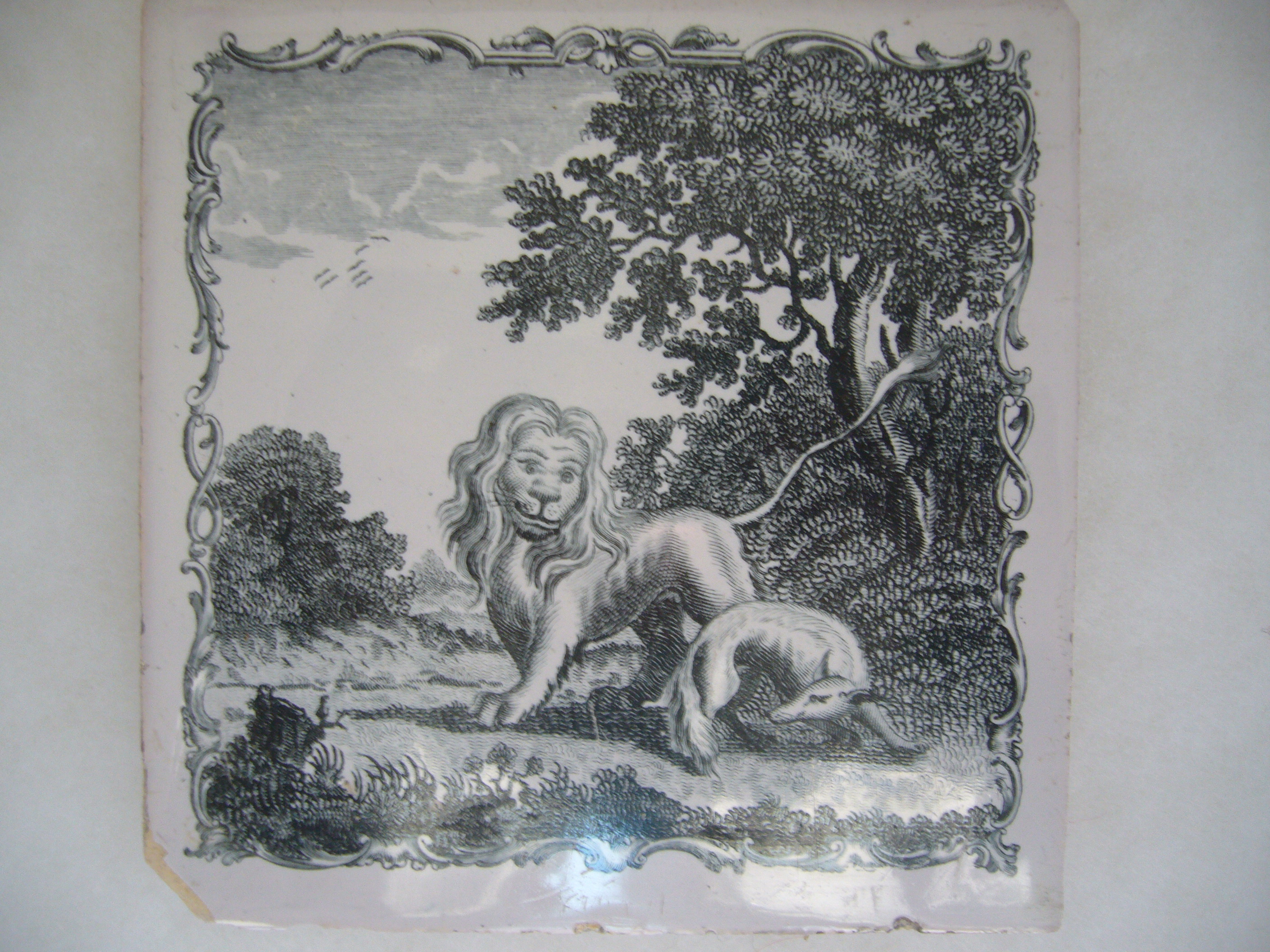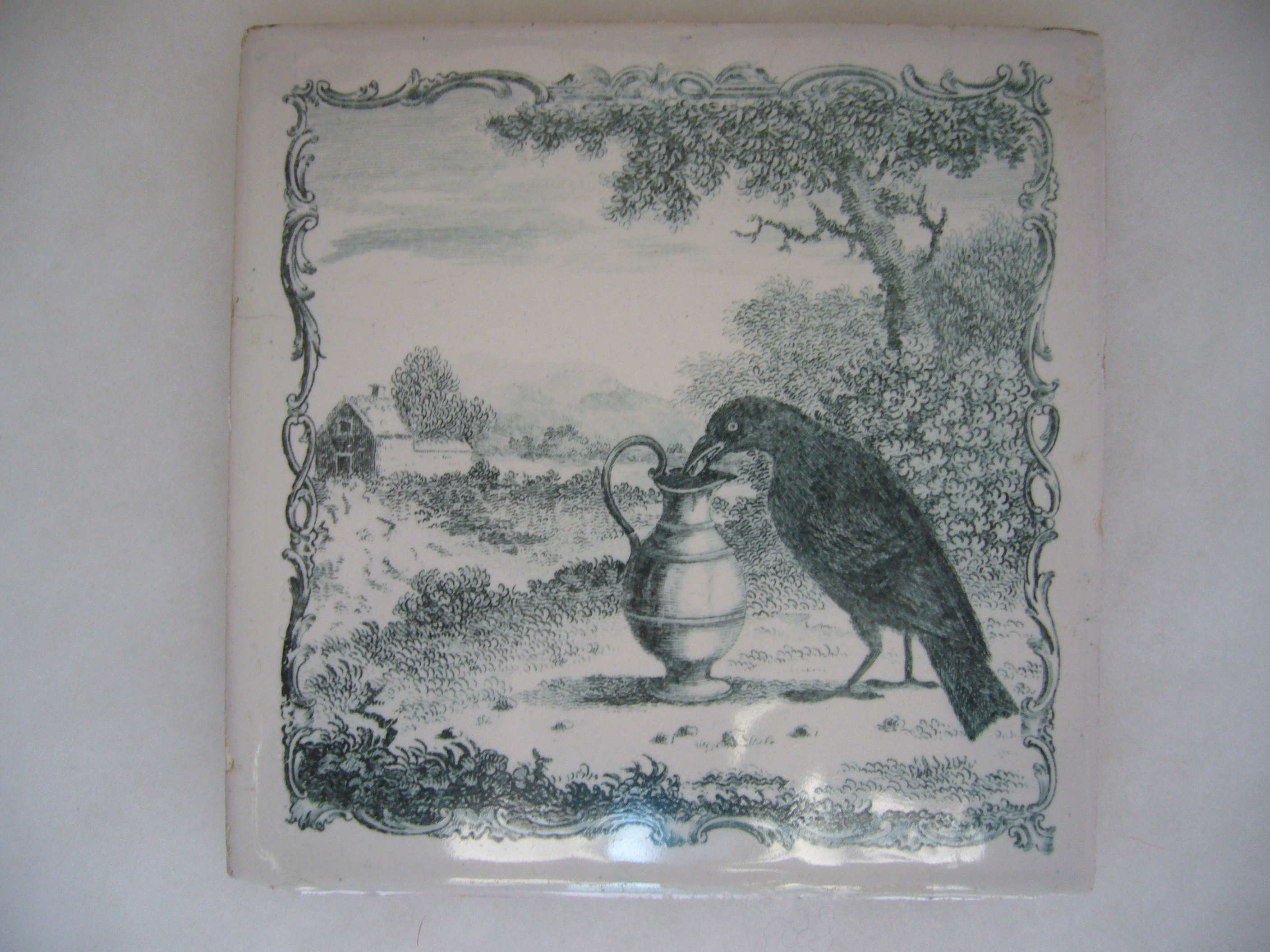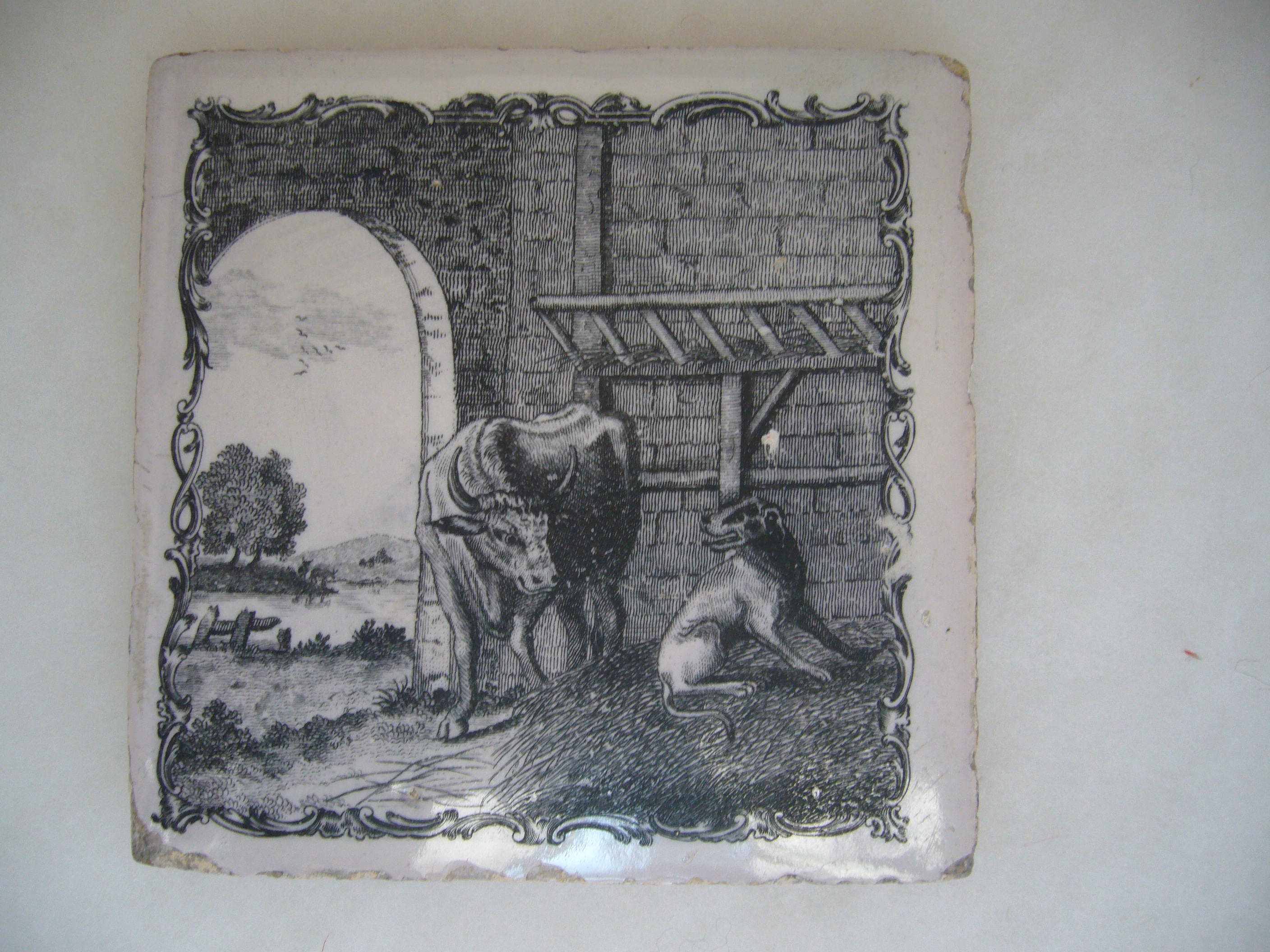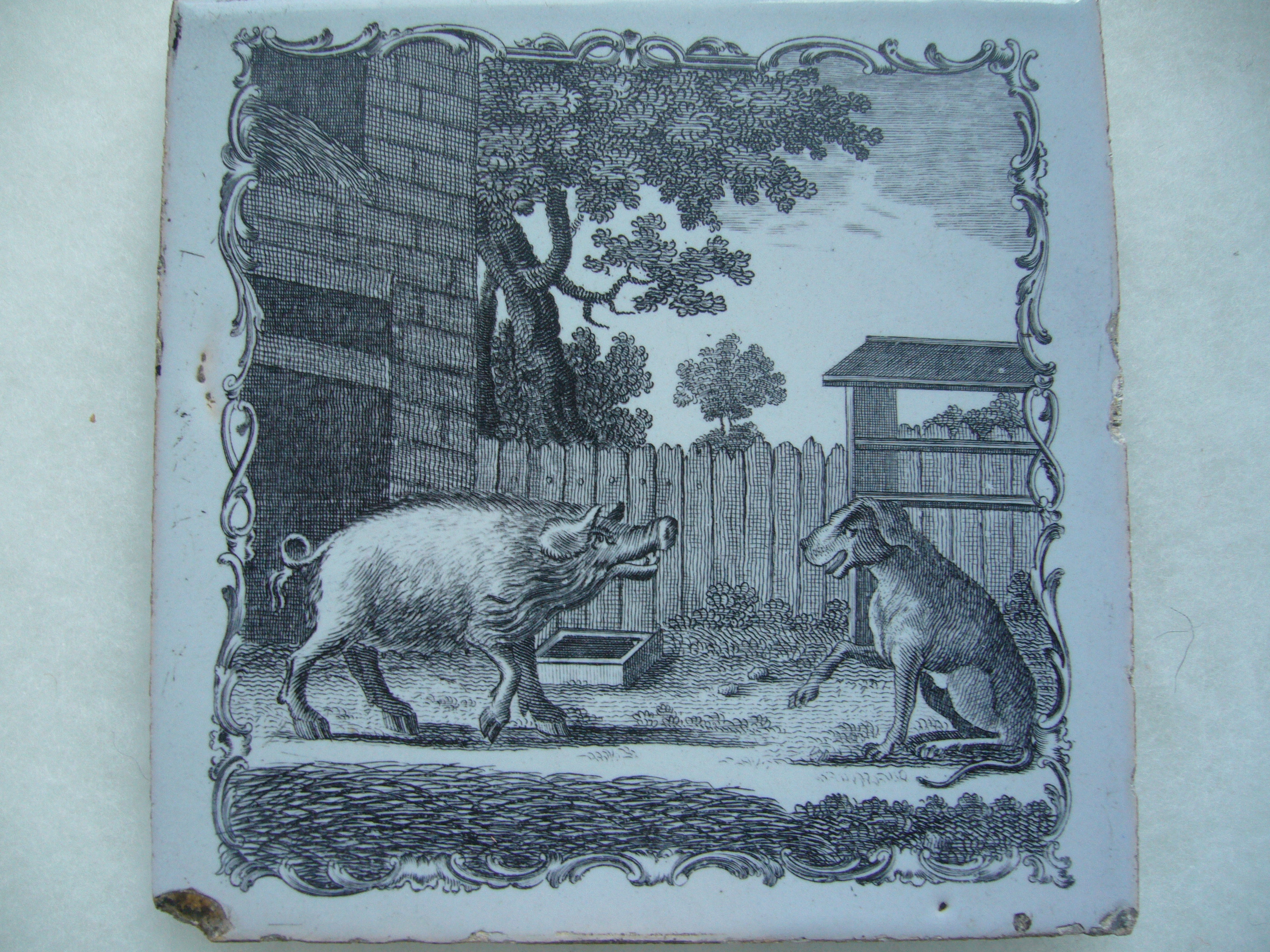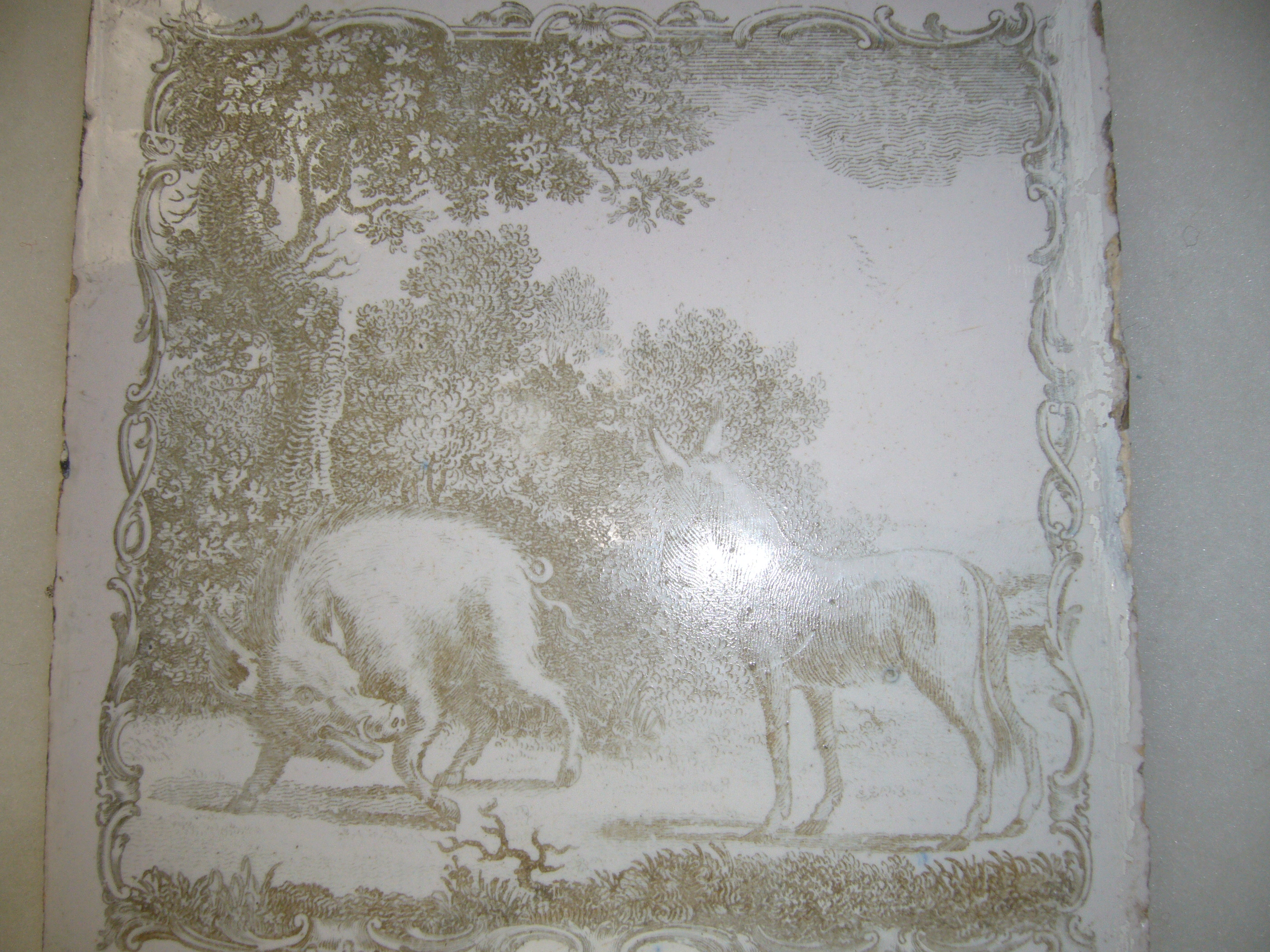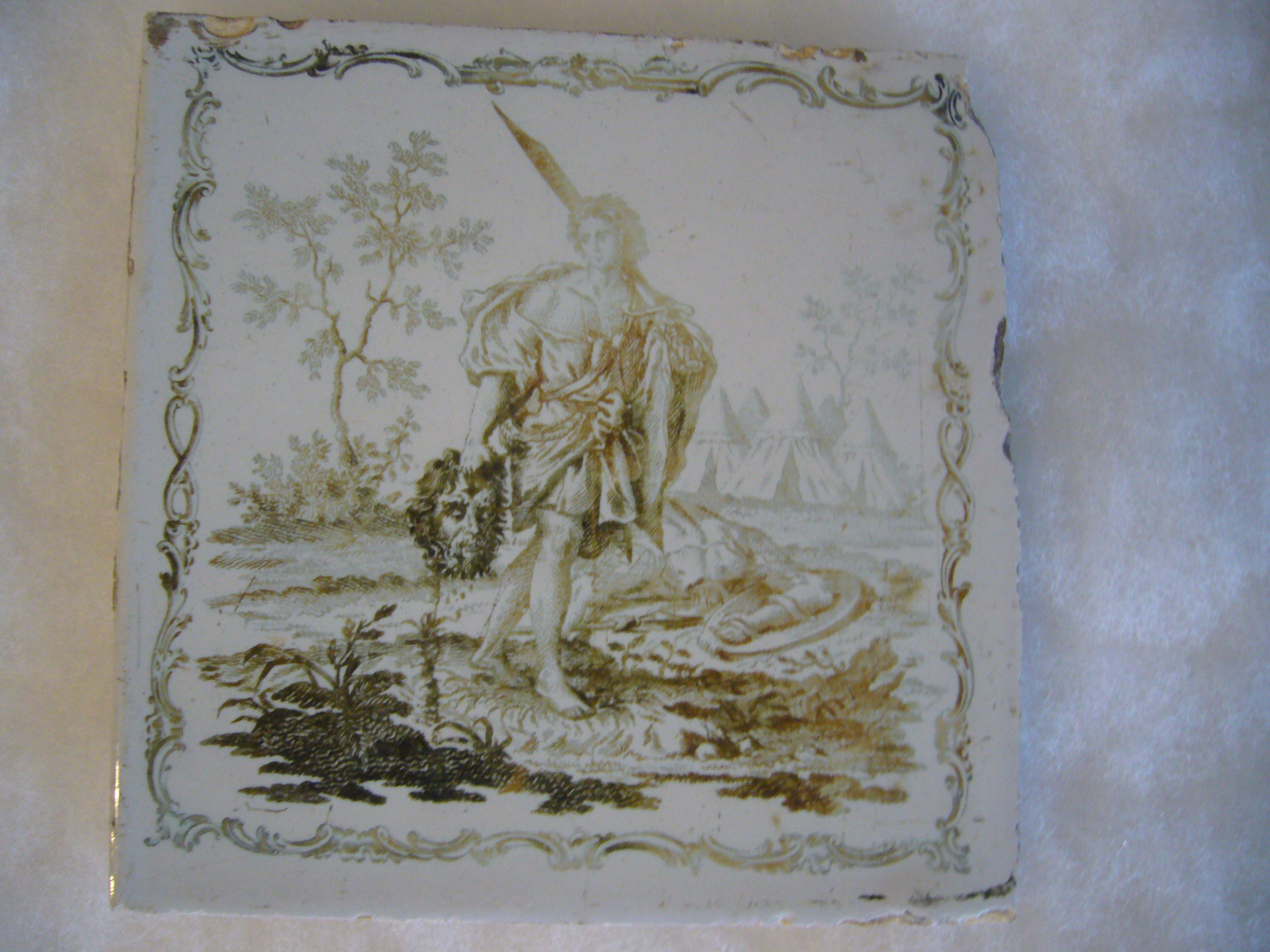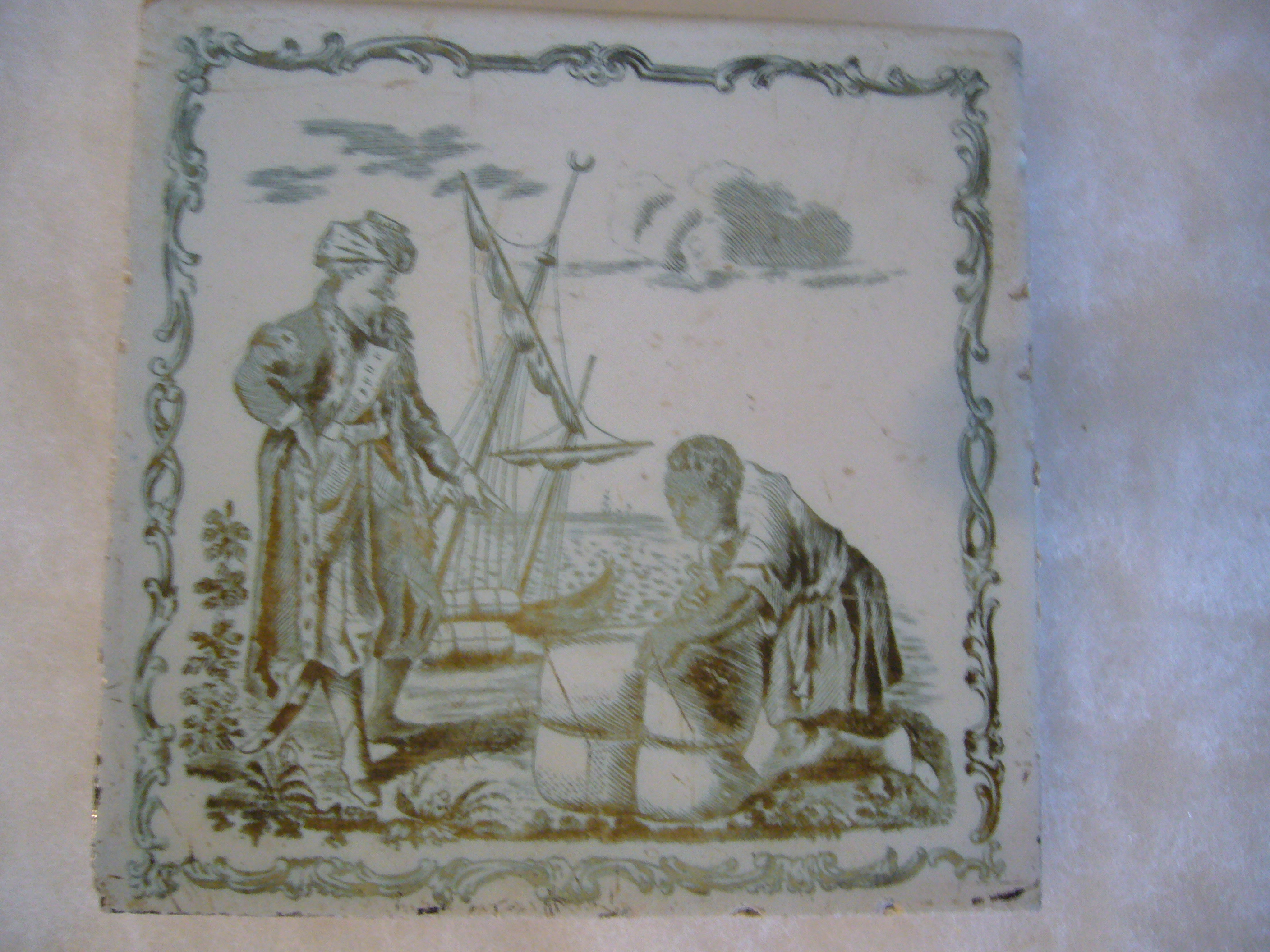In 1756 John Sadler invented the copper plate transfer printing, which enabled mass production of English Delft tiles. A Sadler Tile is also reffered as a Liverpool tile. A Sadler tile was mainly used as the wall of fireplace at bedrooms and dining rooms. Therefore, when old houses were refurbished and/or demolished in 19C, tiles were also lossed. Thus a Sadler Tile is not appeared on the market as a Delft Tile. Accordingly a price is higher than a Delft Tile. The size is 5.1 x 5.1" and the thickness is 0.2". It is much thinner than a hand-made Delft Tile. A color is mono-color such as grey, black, blue, brown and green. A polychrome tile is rare. There is no corner motief.

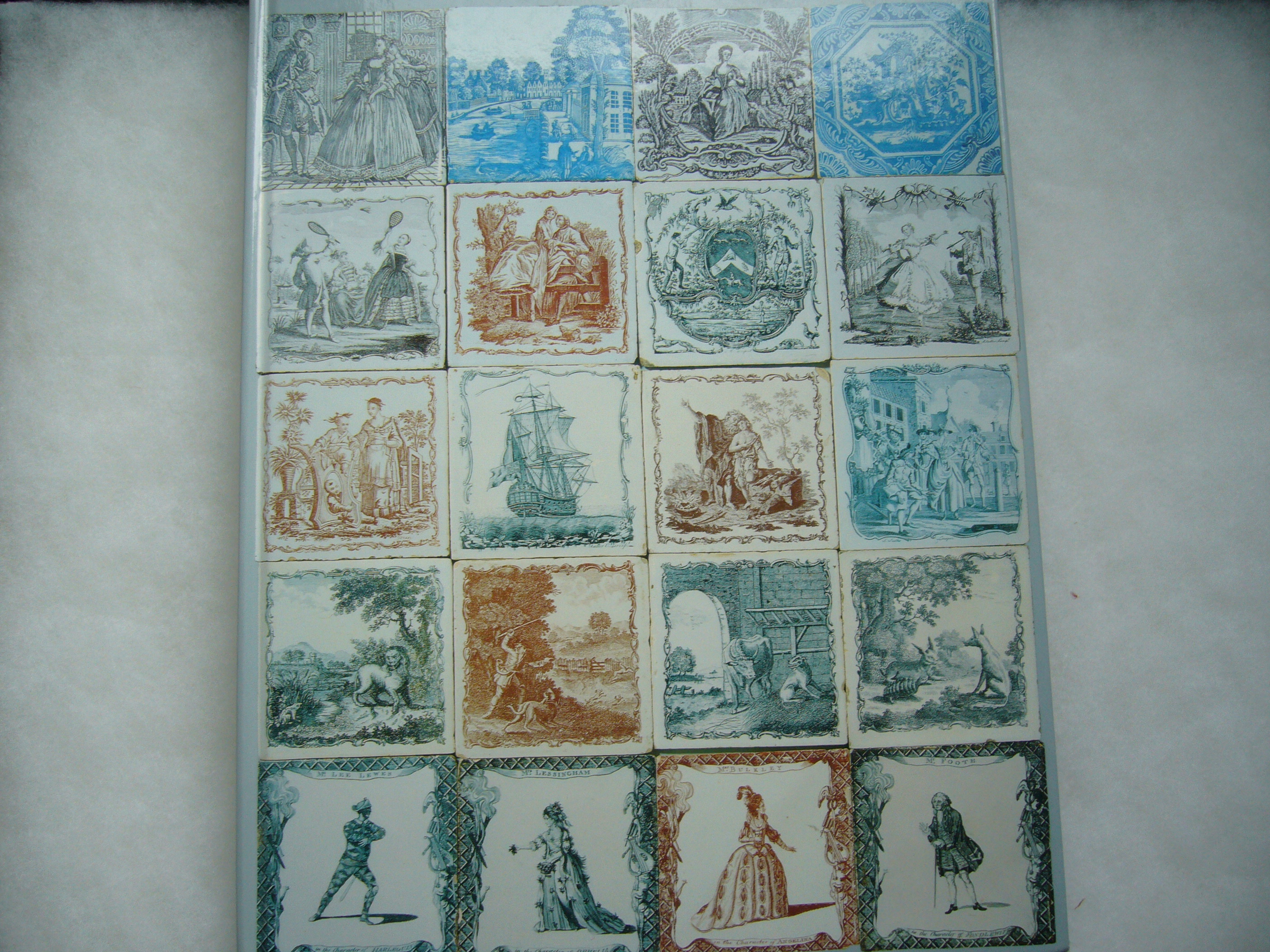 A design is not plentiful as a Delft Tile, but there are still many kinds of patterns. Primary design are Rococo style people of genteel society, rustic life of people,
street scene, landscape, ruined buildings and temples, Aesop Fables, literary characters, oriental subjects, religeous subjects,
satirical & moral subjects and so on. Neo-Clasical designs of vases and urns and theater actor and actress are chracteristic designs with a Sadler Tile.
A design is not plentiful as a Delft Tile, but there are still many kinds of patterns. Primary design are Rococo style people of genteel society, rustic life of people,
street scene, landscape, ruined buildings and temples, Aesop Fables, literary characters, oriental subjects, religeous subjects,
satirical & moral subjects and so on. Neo-Clasical designs of vases and urns and theater actor and actress are chracteristic designs with a Sadler Tile.
"Rococo style people"
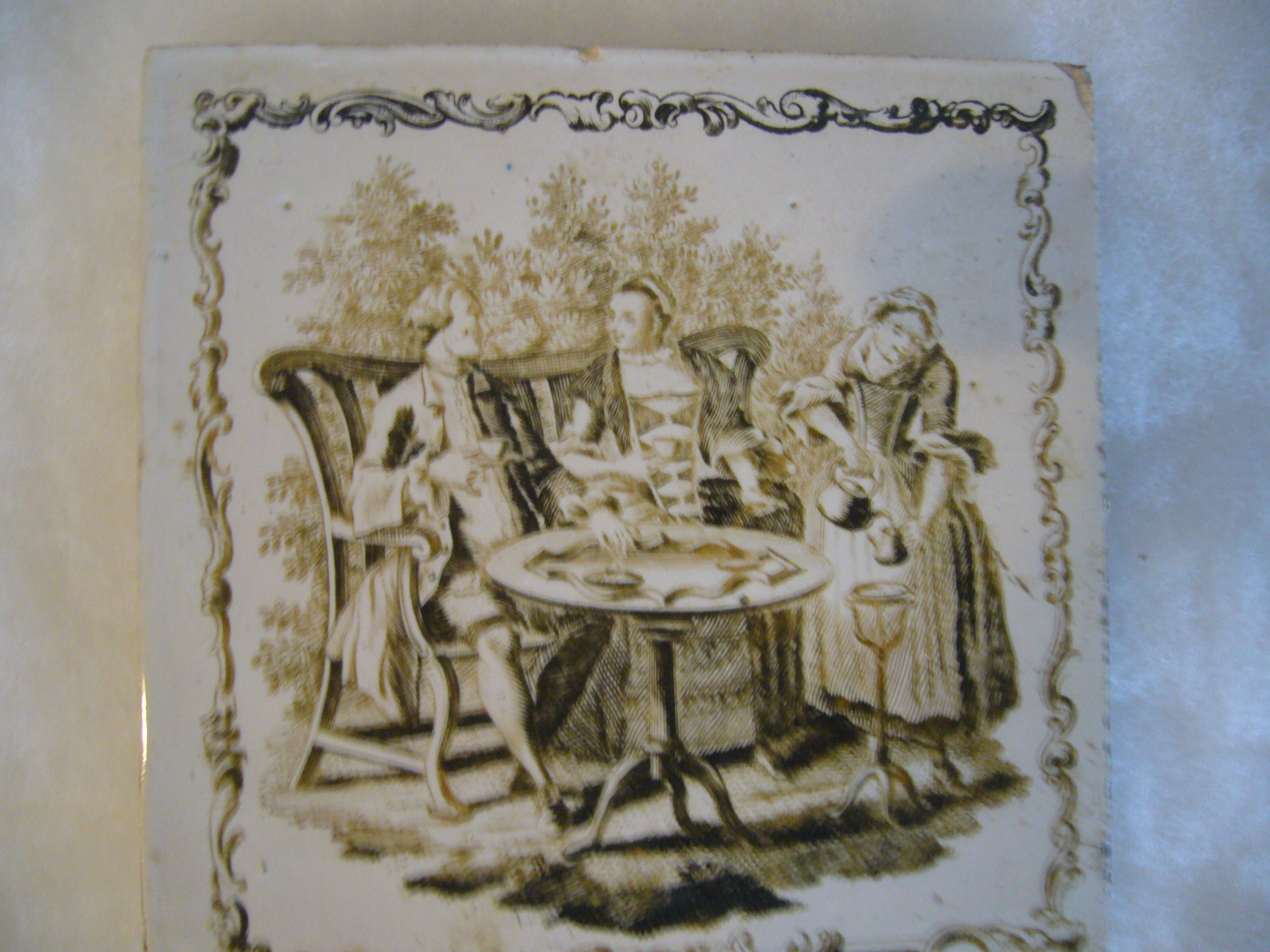
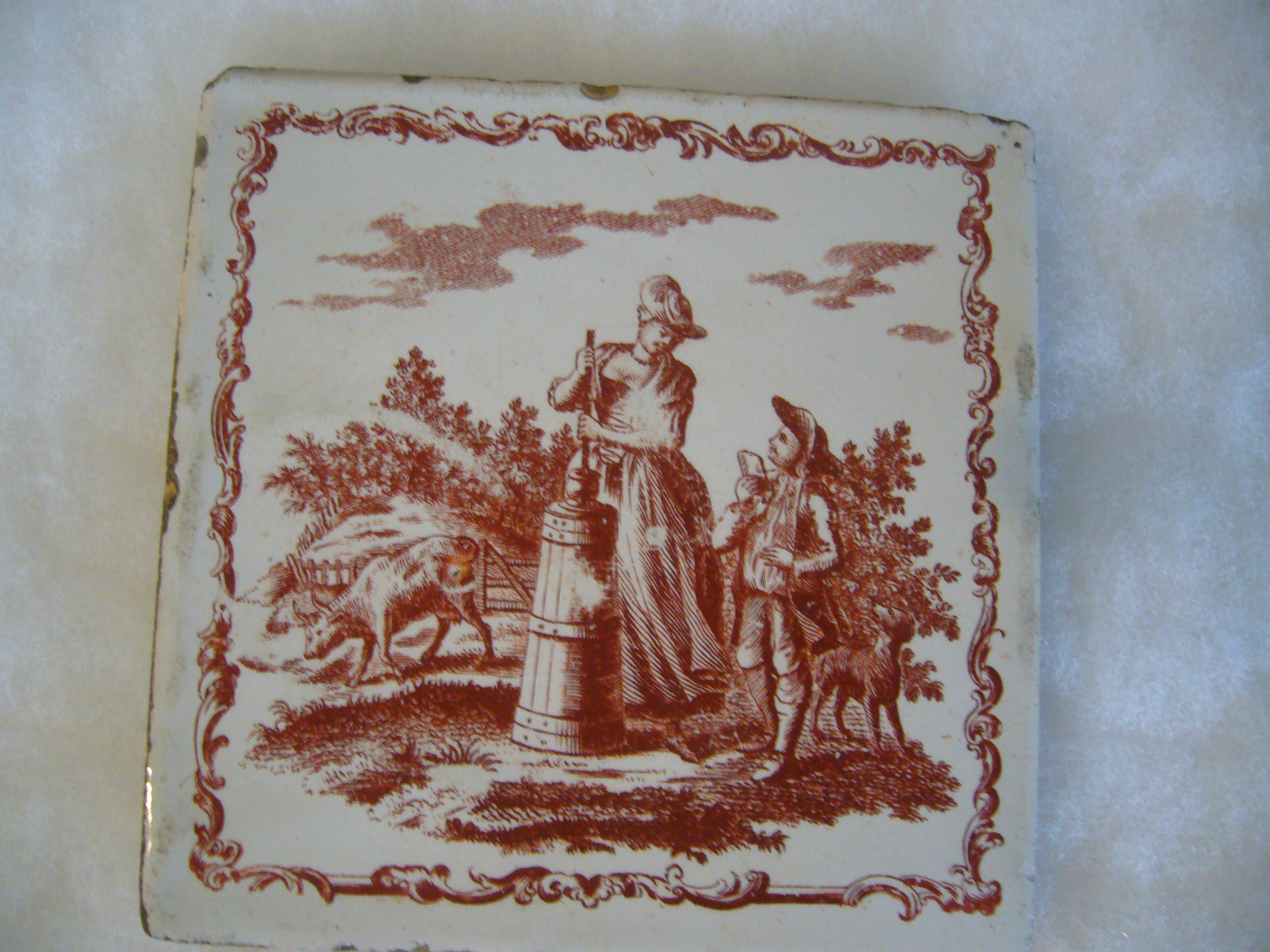 "Tea party" "Making butter" "A couple who love an oarnge tree."
"Tea party" "Making butter" "A couple who love an oarnge tree."
"Satirical subjects"
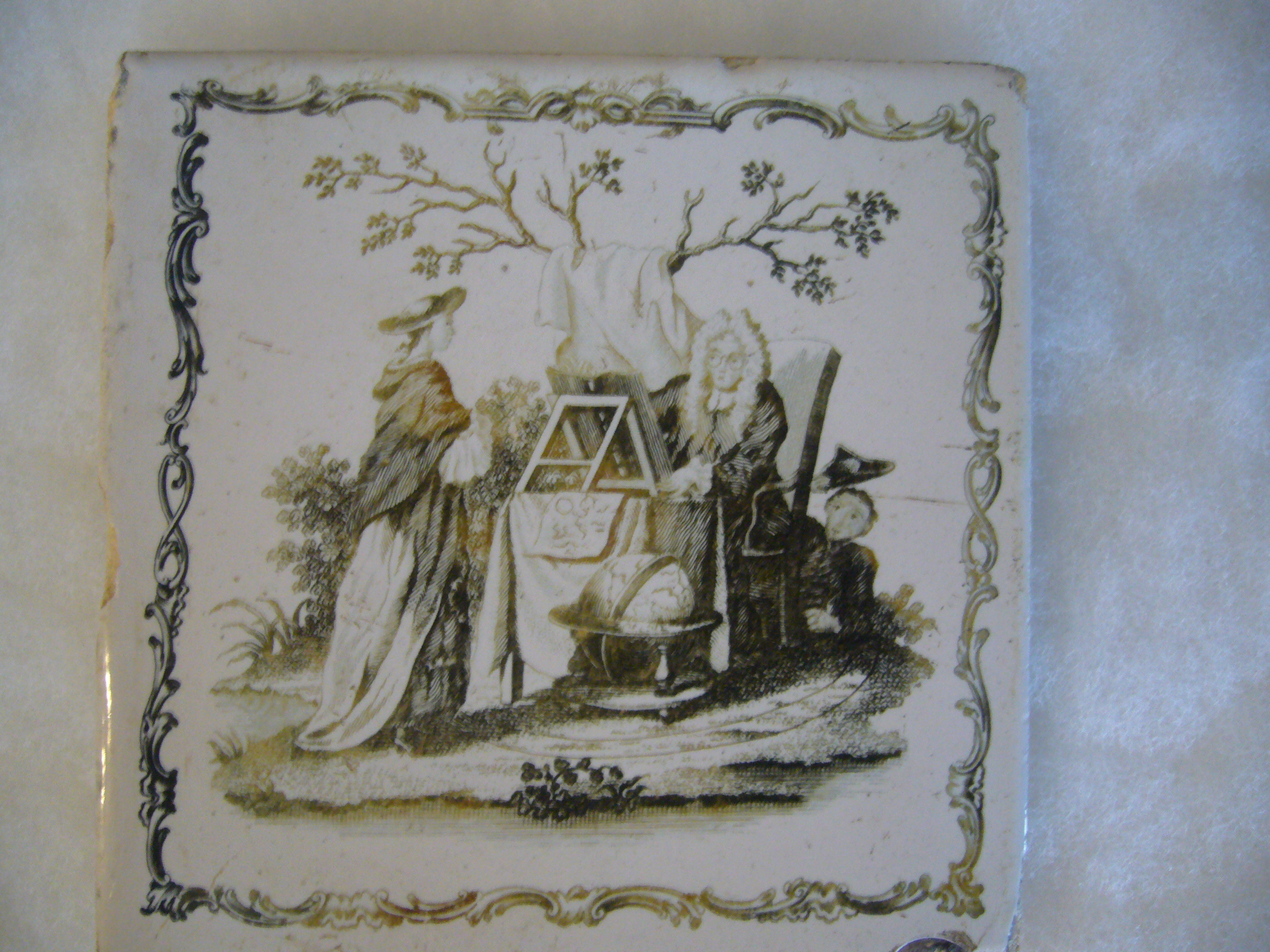
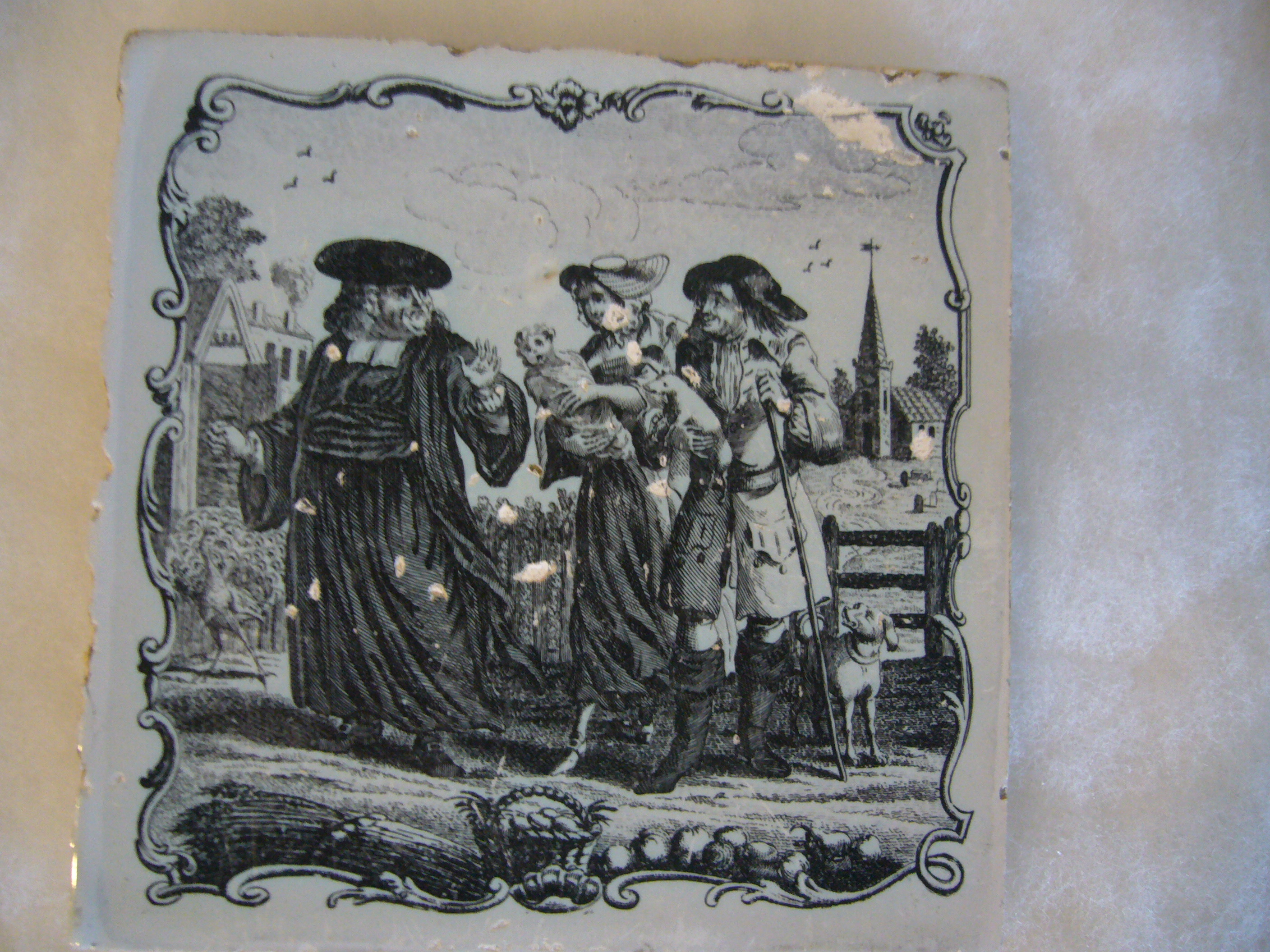
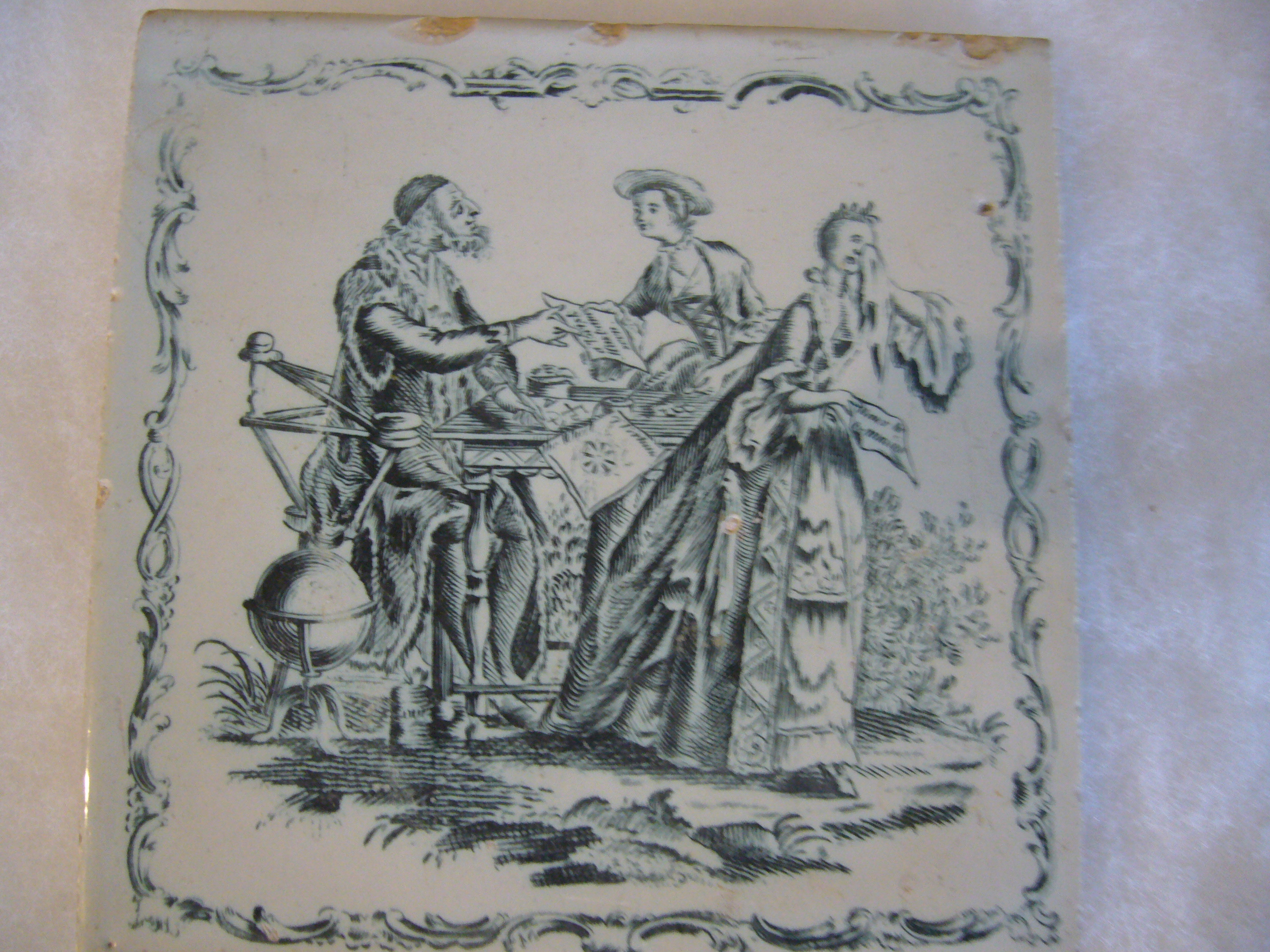 "Disguised astoroger" "Tithe" "Astoroger" "VOC"
"Disguised astoroger" "Tithe" "Astoroger" "VOC"
"Neo-Classic"
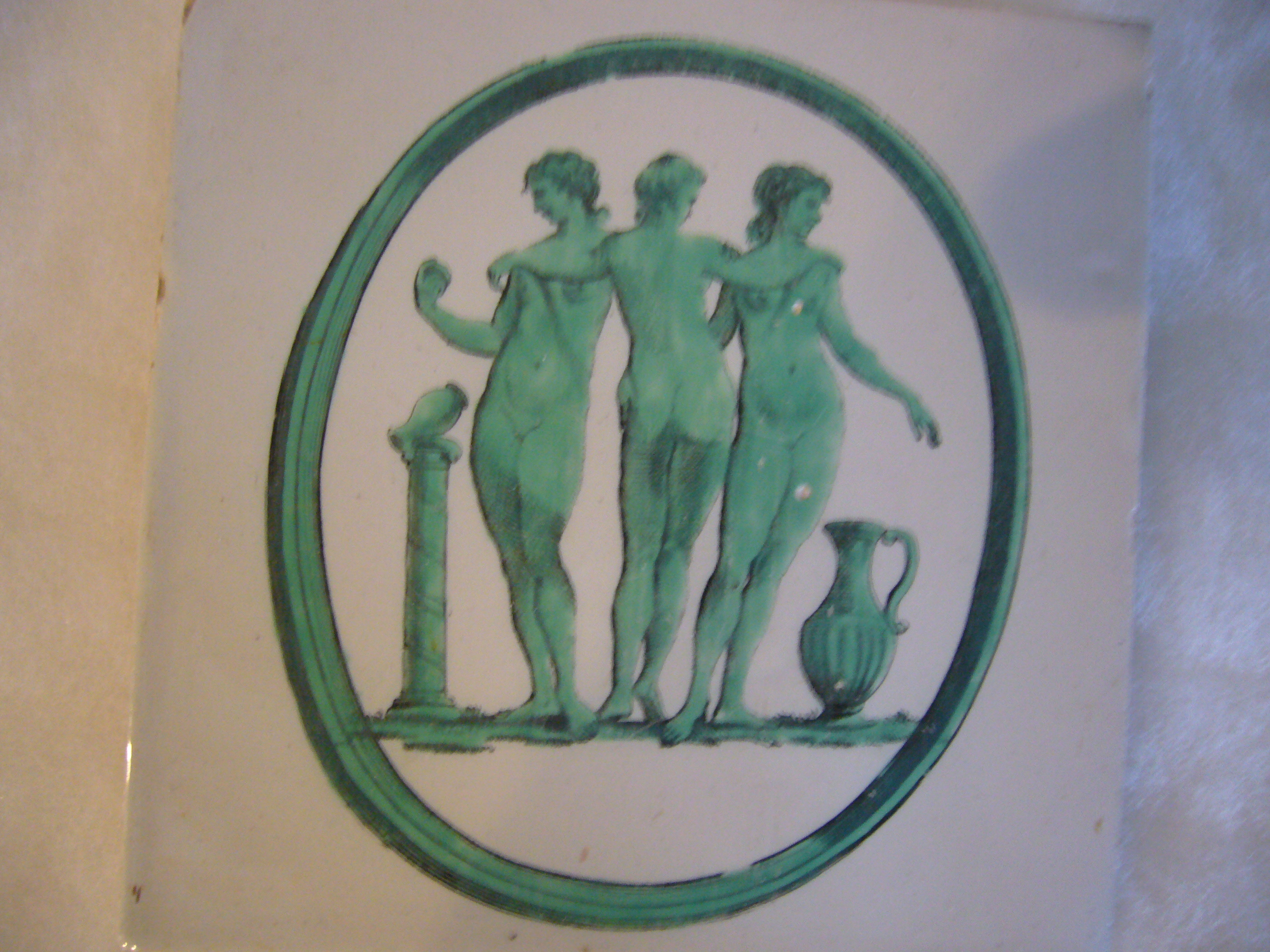
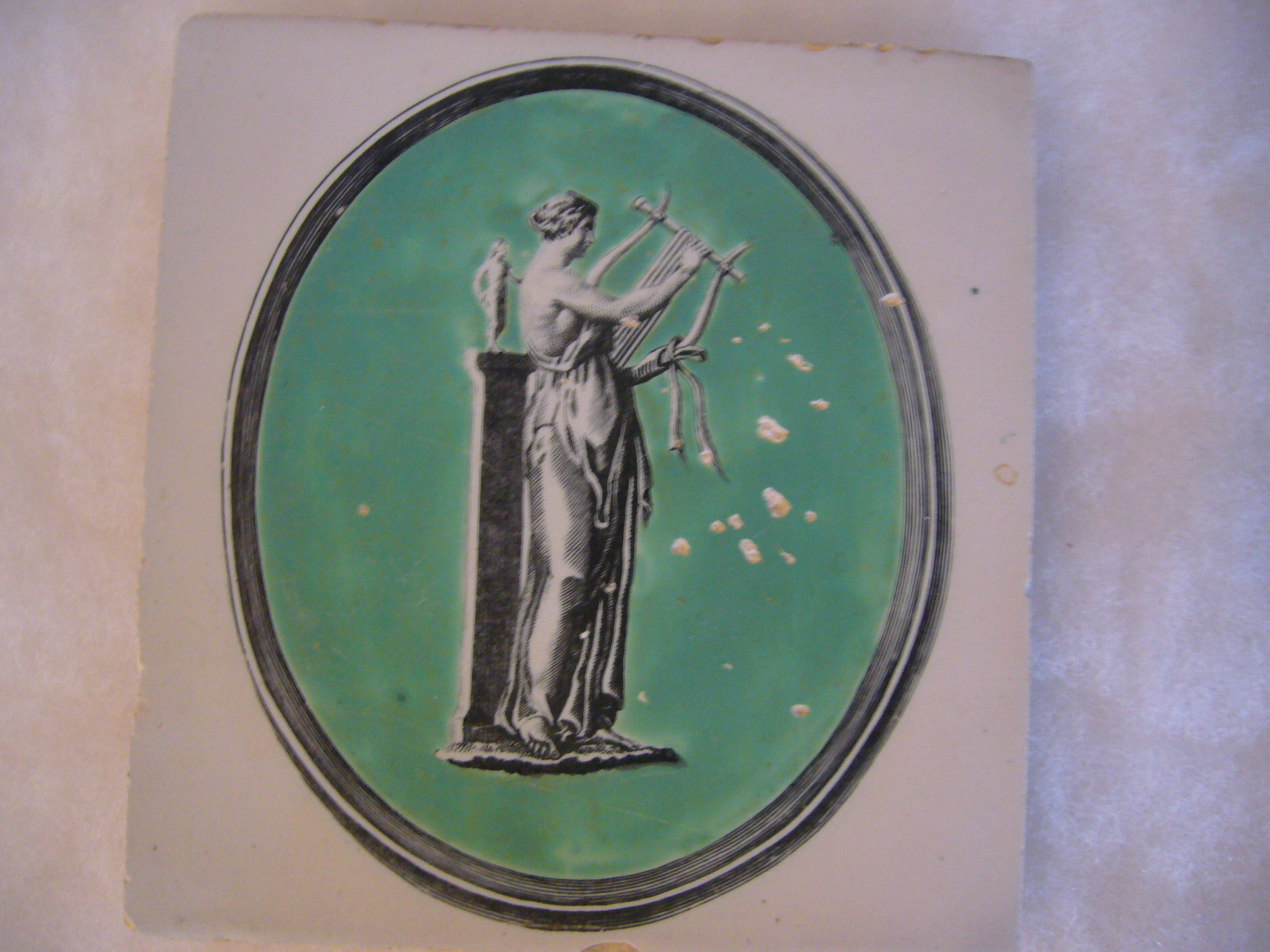
"Three Graces" " Muse with harp"
"David with Goliath head"
"Turky Merchant"
"A lad being apprehended outside an inn"
"VOC Ship"
If you click a photo, it will be enlarge.

